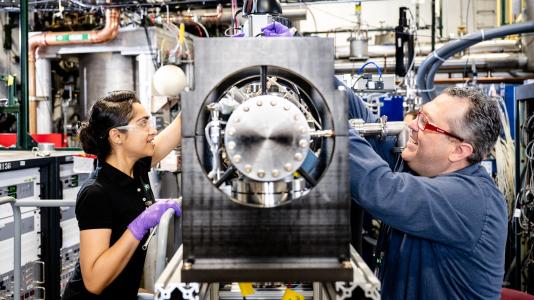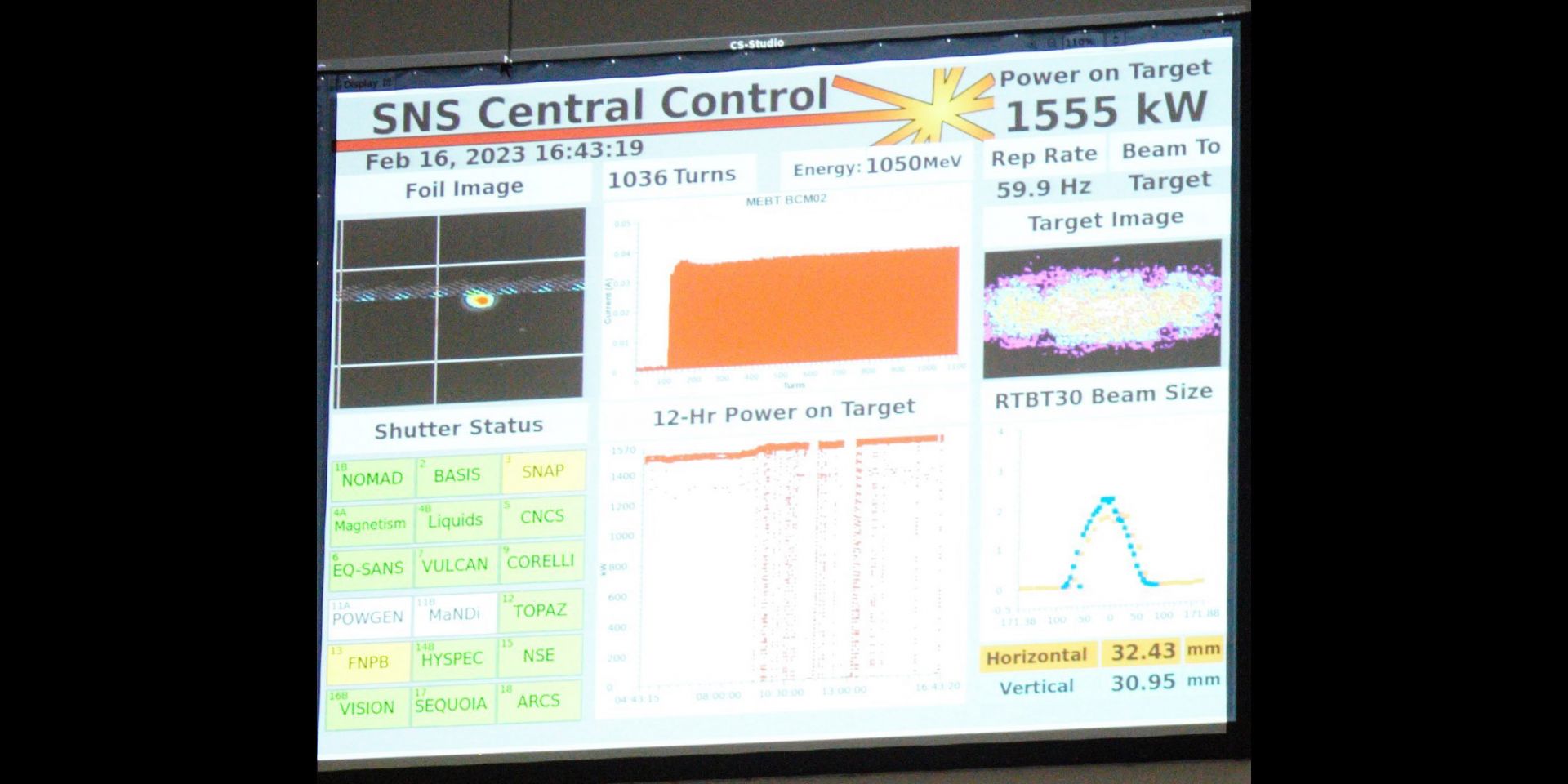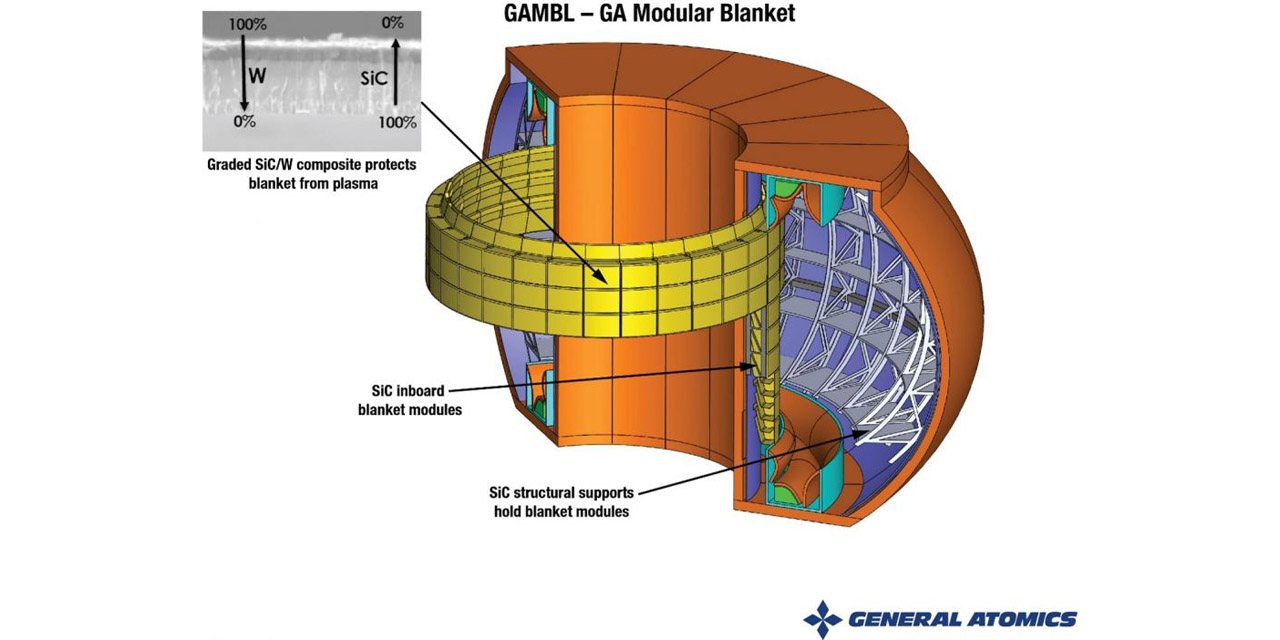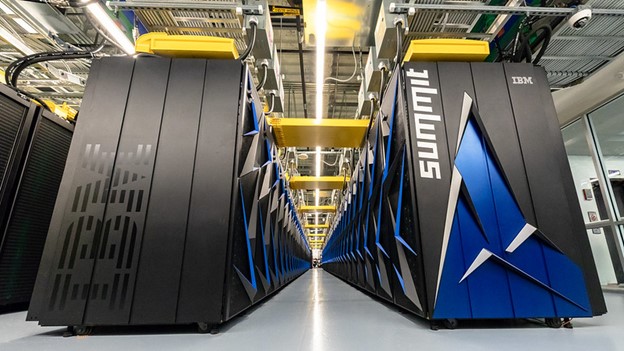Argonne scientists adjust the AMIS beamline prior to its commissioning. (Photo: Argonne)
Argonne’s newest beamline uses heavy ions to degrade a material’s properties as much in a day as a nuclear reactor does in a year, without introducing radioactivity. That’s according to an article published January 16 by Argonne National Laboratory. The Argonne Tandem Linac Accelerator System (ATLAS) now boasts a new beamline—the ATLAS Material Irradiation Station, or AMIS—that uses the accelerator’s lowest high-energy beams to displace atoms and mimic the degradation of materials inside an operating reactor over time. AMIS makes it easier and faster to test candidate fuel and structural materials for existing and future reactors.
Upgrades to the particle accelerator enabling the record 1.7-MW beam operating power at the ORNL’s SNS included adding 28 high-power radio-frequency klystrons (red tubes) to provide higher power for the accelerator. (Photo: Genevieve Martin/ORNL)
The Spallation Neutron Source (SNS) at the Department of Energy's Oak Ridge National Laboratory set a world record when its particle accelerator beam operating power reached 1.7 MW, an improvement on the facility’s original design capability of 1.4 MW, ORNL announced on July 21. That higher power provides more neutrons for researchers who use the Office of Science user facility for materials science investigations.
A control room monitor at ORNL’s SNS displays the power level of 1,555 kW (1.55 MW), a world record for a linear accelerator used for neutron research. (Photo: Jeremy Rumsey/ORNL)
The Spallation Neutron Source (SNS) at the Department of Energy's Oak Ridge National Laboratory set a world record for accelerator-driven neutron research when its linear accelerator reached an operating power of 1.55 MW, improving on the facility’s original design capability of 1.4 MW. That higher power means more neutrons for researchers who use the facility for neutron scattering research to reach materials science advances, ORNL announced recently.
This fusion tokamak cutaway illustrates how the GAMBL concept would be incorporated into a fusion pilot plant. The SiC-tungsten composite wall provides superior heat-removal capabilities and durability, and a modular approach enables fabrication using existing technologies. (Image: GA)
Researchers at General Atomics (GA) are proposing a breeding blanket made of modular silicon carbide–based components to withstand the intense conditions in a high-power fusion power plant. The GA modular blanket (GAMBL) concept is described in an article published this month in the journal Fusion Engineering and Design, and was introduced by GA in a July 13 press release.
The Summit supercomputer at Oak Ridge National Laboratory began operations in 2018. (Photo: ORNL)
The Department of Energy has announced $9.25 million for research into the behavior and properties of structural materials under molten salt reactor conditions through collaborations using the DOE’s high-performance supercomputers.





 2x1.jpg)

